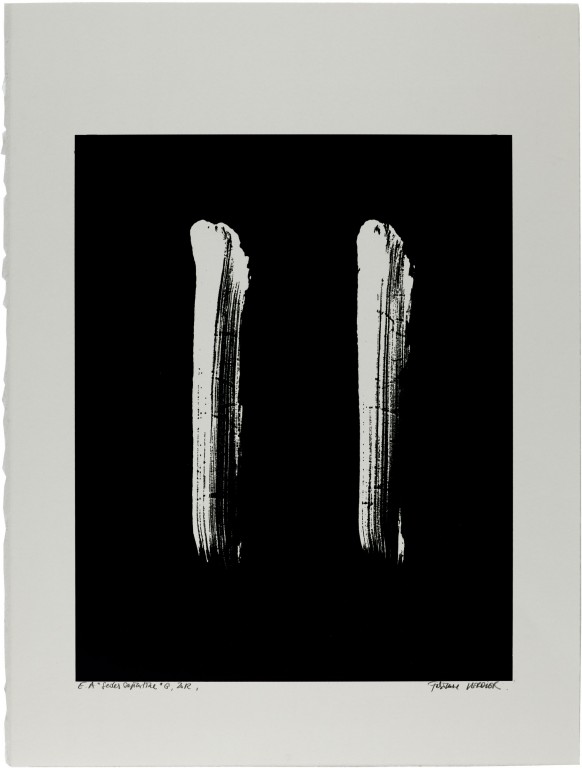After studying at the Superior School of Fine Arts in Toulouse and following a ten-year apprenticeship in China with great masters of calligraphy (related in the novel Passagère du Silence), Fabienne Verdier has developed a form of painting that is deeply personal and spiritual. Her ancestral technique acts both as a bedrock and springboard for the emergence of a succession of inspired fluxes. Fabienne Verdier’s painting is continuous with the experience of the American abstract painters (Tobey, Kline, Still, Pollock ou de Kooning) and carries on the work of artists who have explored the line, such as Matisse, Michaux or Degottex. The work of Fabienne Verdier, whose spontaneity springs forth from an absolute mastery, where knowledge of the past allows her to seize the moment, which links the East and the West, aspires to reconcile Everything in a grand, unique Breath. Her contemplation, during her long journey in China in the 80s, of the highlands allows her monumental brush composed of 35 horse trails, to translate the large rivers, the crest of high mountains, the crackles of the Earth’s bark into an abundant nature. Holding a firm vertical position above her horizontal and telluric medium composed of multiple layers, Fabienne Verdier carries us in a universal gravitation, rooted in the multiple dimensions of space, which take form inside her ink itself.
In 2013, a double exhibition of Fabienne Verdier’s paintings was presented in the collections of the Groeningemuseum in Bruges and at the Erasmus House in Brussels. For almost 4 years, the artist explored in details six masterpieces by van Eyck, Memling, van der Weyden, van der Goes and created a dialogue with the Flemish Masters by associating her own vision. These works were then shown in the exhibition Energy Fields at the gallery during Autumn 2013.
In 2014, Fabienne Verdier was selected to represent France for the French May Festival in Hong Kong. And in 2015, Fabienne Verdier was invited for a 4 months residency at the Julliard Art School in New York to work under the direction of Philip Lasser with major international musicians and composers and to study all the resonances between painting and music.
Homage to Japan in the wake of the tsunami of 11 March 2011 at 2 :46pm
Pigments and ink on canvas
99,2 × 249,2 in
Photograph by Inès Dieleman
Pigments and ink on canvas
100,8 × 118,1 in
Photograph by Inès Dieleman
Oil stick on Arches 88 paper
32,7 × 24,8 in
Photograph by Inès Dieleman
Pigments and ink on canvas
91,7 × 59,1 cm
Photograph by Inès Dieleman
Oil stick on Arches 88 paper
42,5 × 16,1 in
Photograph by Inès Dieleman
Photograph by Inès Dieleman
Pigments and ink on canvas
71,26 × 47,64
La figure de l'homme en prière
Homage to Japan in the wake of the tsunami of 11 March 2011 at 2 :46pm
Pigments and ink on canvas
99,2 × 249,2 in
Photograph by Inès Dieleman
Pigments and ink on canvas
100,8 × 118,1 in
Photograph by Inès Dieleman
Oil stick on Arches 88 paper
32,7 × 24,8 in
Photograph by Inès Dieleman
Pigments and ink on canvas
91,7 × 59,1 cm
Photograph by Inès Dieleman
Oil stick on Arches 88 paper
42,5 × 16,1 in
Photograph by Inès Dieleman
Photograph by Inès Dieleman
Pigments and ink on canvas
71,26 × 47,64
La figure de l'homme en prière



















































